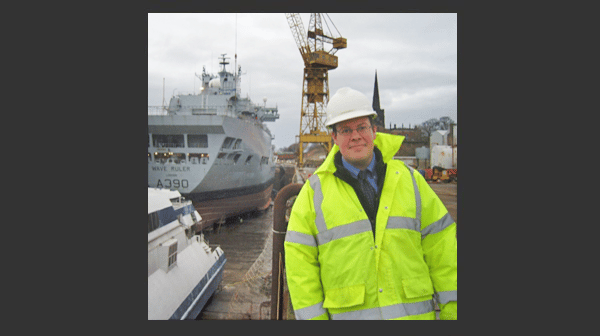By Linton Roberts, Managing Director of Cammell Laird, and a qualified Naval Architect.
“The devil is in the detail” as they say. This is always the case when it comes to repairing, refitting or converting ships.
The past two decades have seen a steady decline of people in our industry who are capable of accurately developing and understanding the ‘detail’ of project technical specifications.
As a result the fall back position, for many projects, is to produce a ‘catch-all’ contract document with clauses which place the responsibility for specification ‘omissions and inaccuracies’ on one party or the other. Whilst the contract can mitigate the risk to the parties sometimes, there are seldom any benefactors to a ship being delayed with large amounts of emergent work – whether it be financial or reputational.
Why is specification detail so important? The biggest risk in any complex repair or conversion project for either the shipyard or the owner is uncertainty leading to unexpected time or cost. An accurate and detailed estimate along with a realistic schedule is the foundation of any successful project, but the level accuracy and realism are dependent on the quality of information generated in the specification.
Time spent at the beginning of the project getting the detail right usually pays dividends at the delivery end.
There are positive signs that things are starting to change with a trend towards contracts which encourage collaborative working and a more transparent approach to project definition in the early stages.
Pooling the collective expertise held within the ship owner and shipyard technical teams requires a certain leap of faith from both parties, but a good shipyard will not shy away from the opportunity to allow more time to plan, provide detailed cost assessments and reduce risk for all parties on the project.
Whilst this approach can be difficult to manage within a competitive tender process, we have been involved in many high profile projects which show that it can work, and work well.
Much of the lack of experience and knowledge in the industry has been caused by the reduction in apprentice, graduate and cadet training over many years, a problem which will take years to correct. Again, however, the signs are good, the industry has addressed the challenge with a welcome return to far more apprentice and graduate training places, and we all need to ensure that this continues.
Cammell Laird recognised this problem and has reinvigorated our apprentice and graduate recruitment schemes in recent years. In the last 15 years around 300 trade apprentices have been trained along with around 30 graduate naval architects and marine engineers. We are now seeing real benefits within our management and technical office teams with many experienced young engineers and trades people coming through.
Recently Cammell Laird hosted industrial placements for a number of graduates and apprentices from marine consultancies, as well as groups of marine engineering cadets from some of our customers. Arrangements have been reciprocal, so our apprentices and graduates have also been able to gain experience and perspective from the consultants and ship owners.
With relationships being established amongst these young engineers from across the industry spectrum, I hope this points towards a more collaborative future where the ‘devil’ of technical definition and detail really matters again!
About Cammell Laird.
Based within the Port of Liverpool, Cammell Laird is the leading commercial shipyard in the United Kingdom. It specialises in shipbuilding, ship repair and conversion. Our 53 Hectare site includes four large dry-docks of up to 289m x 42.7m, 1000m of non tidal quay space, 6 building berths of up to 280m x 42m and over 50,000 m2 of fabrication and engineering workshops.
Cammell Laird currently employs a core workforce of nearly 1000 highly skilled personnel with the ability to design, build, repair or convert any type of vessel.
The local supply chain workforce includes all complimentary activities and regularly numbers over 600.
We invest heavily in staff training and we have an award winning Apprentice Scheme with ∼80 apprentices currently within our onsite training college.
Over 150 vessels are repaired per annum ranging from large ROPAX, specialist offshore construction vessels, tankers, tugs, bulk carriers, container ships through to military auxiliaries.
Recent repair contracts include multiple dockings for P&O, Caledonian Macbrayne and Seatruck Ferries as well as major offshore mobilisation works for A2SEA which included over 300 tonnes of fabrication.
After the recent delivery of a 60 mtr new-build ferry, current shipbuilding contracts include the new state of the art, 128 mtr icebreaking research vessel RRS ‘Sir David Attenborough’ for British Antarctic Survey.

